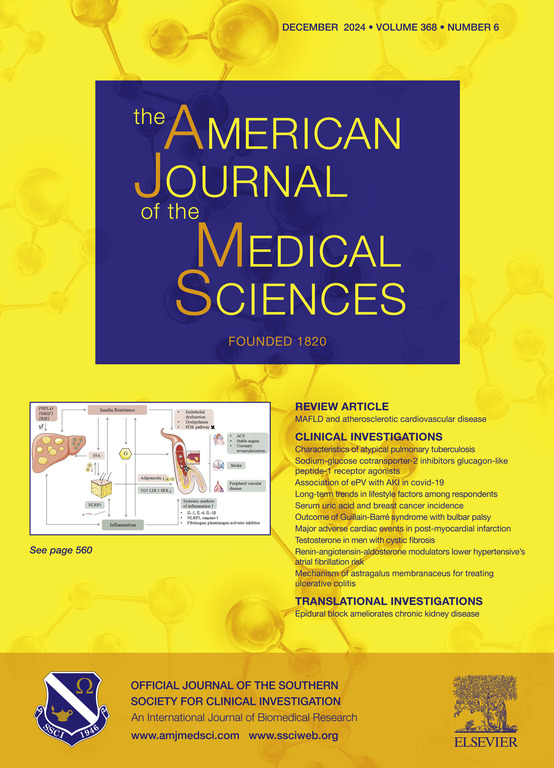Beyond pressure and volume: mechanical power levels in a cohort of intensive care unit patients
IF 2.3
4区 医学
Q2 MEDICINE, GENERAL & INTERNAL
引用次数: 0
Abstract
Background
Several ventilator parameters can be used to evaluate gas exchange and mechanical properties of the respiratory system in acute respiratory failure patients. The calculation of mechanical power (MP), a critical parameter that summarizes the energy transferred from the ventilator to the patient’s lungs, is not routinely made in these patients.
Methods
This study analyzed the distribution of MP in a cohort of 70 patients requiring mechanical ventilation and investigated its association with clinical outcomes.
Results
This study included 39 men and 31 women with a mean age of 57.7 ± 15.1 years. The mean MP index decreased significantly from 10.4 J/min ± 5.65 on day 2 of mechanical ventilation to 8.3 J/min ± 4.1 on day 4 (p = 0.045). The mean length of mechanical ventilation was 5.2 Mechanical power measured on day 2 (r = 0.317, p = 0.052) and day 4 (r = 0.352, p = 0.030) positively correlated with the duration of mechanical ventilation. There were no differences in MP between survivors and non-survivors on both day 2 (p = 0.458) and day 4 (p = 0.373).
Conclusions
This study analyzed the distribution of MP levels in mechanically ventilated patients in an ICU. Mechanical power measured on days 2 and 4 of mechanical ventilation had a positive correlation with the duration of ventilation, but it was not a significant predictor of ICU mortality.
压力和容积之外:重症监护病房患者队列中的机械功率水平。
背景:几个呼吸机参数可以用来评估急性呼吸衰竭患者呼吸系统的气体交换和机械性能。机械功率(MP)是一个关键参数,总结了从呼吸机转移到患者肺部的能量,在这些患者中没有常规计算。方法:本研究分析了70例需要机械通气患者的MP分布,并探讨其与临床结果的关系。结果:男性39例,女性31例,平均年龄57.7±15.1岁。平均MP指数由机械通气第2天的10.4 J/min±5.65降至第4天的8.3 J/min±4.1 (p = 0.045)。机械通气时间平均为5.2±6.5d。第2天和第4天的机械功率测量值(r = 0.317, p = 0.052)与机械通气时间呈正相关(r = 0.352, p = 0.030)。幸存者和非幸存者在第2天(p = 0.458)和第4天(p = 0.373)的MP均无差异。结论:本研究分析了ICU机械通气患者MP水平的分布。机械通气第2天和第4天测量的机械功率与通气时间呈正相关,但不是ICU死亡率的显著预测因子。
本文章由计算机程序翻译,如有差异,请以英文原文为准。
求助全文
约1分钟内获得全文
求助全文
来源期刊
CiteScore
4.40
自引率
0.00%
发文量
303
审稿时长
1.5 months
期刊介绍:
The American Journal of The Medical Sciences (AJMS), founded in 1820, is the 2nd oldest medical journal in the United States. The AJMS is the official journal of the Southern Society for Clinical Investigation (SSCI). The SSCI is dedicated to the advancement of medical research and the exchange of knowledge, information and ideas. Its members are committed to mentoring future generations of medical investigators and promoting careers in academic medicine. The AJMS publishes, on a monthly basis, peer-reviewed articles in the field of internal medicine and its subspecialties, which include:
Original clinical and basic science investigations
Review articles
Online Images in the Medical Sciences
Special Features Include:
Patient-Centered Focused Reviews
History of Medicine
The Science of Medical Education.

 求助内容:
求助内容: 应助结果提醒方式:
应助结果提醒方式:


